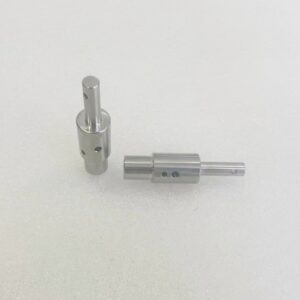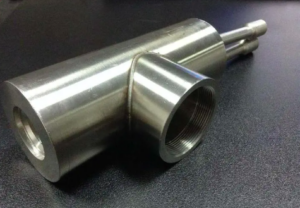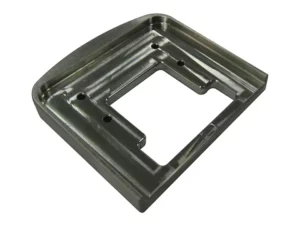In recent years, China’s electronic manufacturing equipment industry has gone through a tortuous road from foreign introduction to digestion absorption, and innovation.
For electronics manufacturing equipment manufacturers, despite the wide variety of equipment, they are designed and manufactured to meet the increasingly high-end modular, networked, and digital electronic equipment products, pursuing higher processing efficiency and smarter production lines. It is the unshakable vision of this industry.
Among them, PLC (Programmable Logic Controller) is one of the core technologies of equipment automation control. With the rapid development of its technology, it is bound to be in more and more electronic manufacturing equipment, to the entire electronic automation production line/assembly line.
The key to the automation system of the entire plant, ultimately, will help the electronics manufacturing equipment manufacturer’s Industry 4.0 goal to take a big step.
Table of Contents
TogglePLC Technology Drives Smart Innovation
Since the birth of the first PLC more than 50 years ago, PLC has never stopped the pace of technological revolution, its variety is more and more abundant, its function is more and more powerful, and its application is more and more extensive, whether it is production, manufacturing or management, inspection. All can see the figure of the PLC.
At present, with the development of microelectronics technologies such as large-scale and very large-scale integrated circuits, PLC has evolved from the original one to the current microcomputerized PC composed of 16-bit and 32-bit microprocessors and realizes multi-processors—multi-channel processing.
Today, PLC technology is very mature, not only control function enhancement, power consumption and volume reduction, cost reduction, reliability improvement, programming, and fault detection is more flexible and convenient, and with remote I / O and communication networks, data processing and The development of image display has made PLC develop in the direction of continuous production process control, and has become a pillar of industrial automation.
In the era of intelligent manufacturing in various industries, the development of PLC technology presents new features such as bipolar development of products, communication networking, modularization and intelligence, diversification and standardization of programming languages/tools, and integration with emerging technologies.
For example, at the end of 2018, PLC traditional giant Siemens introduced a new module integrated with artificial intelligence chips for the SIMATICS7-1500 controller and ET 200MP I/O system: SIMATIC S7-1500 TMNPU (Neural Processing Unit) With the artificial intelligence chip Intel Movidius Myriad X Vision processing unit, it can achieve efficient processing of the neural network.
Moreover, the SIMATIC S7-1500 TMNPU is outfitted with a USB 3.1 interface and a Gigabit Ethernet port to handle data from connected sensors or data from the CPU program on a neural network basis. For example, using machine learning algorithms, quality control of production plants or image-controlled robot systems can be efficiently implemented.
Mitsubishi Electric’s FX series is highly favored in the small PLC market for its excellent performance and extensive product range. The latest iQ-FX5UJ of the new generation boasts a program capacity of 48K Steps, a control scale of 256 points, and comes equipped with built-in features like straightforward CPU communication and data logging. The iQ-F series safety expansion module is an important part of the series.
The product specifications are divided into two types: the safety main module and the safety input expansion module. The safety main module performs safety control and can be connected to the iQ-F bus.
The safety expansion module can be operated separately from the normally controlled power supply. In practical applications, the safety module sets different safety control modes according to different machine types to ensure the operator’s safety.
PLC: Building an Electronic Intelligent Manufacturing Future
The electronics manufacturing industry is cumbersome, and the equipment required for its processing involves the processing of various electronic devices. Electronic manufacturing equipment includes semiconductor equipment, optoelectronic equipment, electronic component equipment, SMT equipment, PCB equipment, environmental testing equipment, anti-static equipment, ultrasonic equipment, purification equipment, laser equipment, and other electronic general equipment.
As a typical OEM industry, the electronics manufacturing equipment industry involves a wide range of product types. On the whole, the automation of semiconductor devices integrated circuit special equipment, and electronic whole-machine assembly equipment is relatively high. The automation products used include PLC, HMI, servo, low-voltage inverter products, etc.
PLC (Programmable Logic Controller) serves as a pivotal control system within the electronic manufacturing equipment industry. It has a strong performance in the overall market of intelligent hardware products, especially smartphones, smart bracelets, children’s watches, etc., which has driven the rapid development of electronic equipment manufacturing.
The application of PLC in electronic product manufacturing equipment is mainly used to realize automatic control functions. PLC is used as a control center in electronic component processing and manufacturing equipment, so that the transmission and positioning of the components, the machining depth control motor, the rotary motor, and the output motor can be coordinated and coordinated to achieve automation.
With the miniaturization and diversification of electronic products and the sharp increase in labor costs, the automation of electronic manufacturing equipment will be higher in the future, and the demand for target products will continue to rise. PLCs find extensive application in various domains such as electronic components, electromechanical components, cleaning machines, welding machines, and more.
Due to the high degree of automation of the electronic equipment assembly equipment in the semiconductor device and integrated circuit special equipment industry, the special equipment for electric vacuum devices and the routine test and reliability test equipment include mechanical environment test equipment, climate environment test equipment, and reliability test equipment. Etc. will also be involved.
Among the special equipment for electric vacuum devices, LCD devices have been developed in recent years. They are controlled by PLC. Each device is equipped with one host and 4-5 sets of expansion units. LCD devices contain several process flows, and PLCs for different device applications vary widely. Most of the processes apply to PLCs with IO points not exceeding 80, but there are also cases where large equipment exceeds 300 points.
According to statistics, in 2017, the proportion of automation products involved in the electronics manufacturing equipment industry accounted for 19.1% of PLCs, mainly including small PLCs and medium and large PLCs, especially small PLCs, which are more widely used in the PLC market in the electronics manufacturing industry. Up to 69.8%.
At present, there are more than 200 PLC manufacturers in the world, and more than 400 kinds of PLC products can be divided into three genres of products the United States, Europe, and Japan according to the region. Each genre PLC product has its characteristics.
The world’s leading manufacturers of electronic manufacturing PLC technology are from the world’s automation control system giants, such as Mitsubishi Electric, Siemens, B&R, Beckhoff, Yifumen and Advantech, and other international automation providers, all have a full range of PLC products. It can cover a wide range of electronic manufacturing equipment control needs.
3


